Why doesn't Turkish coffee filter dregs? Taste characteristics of extraction principle of Turkish Coffee
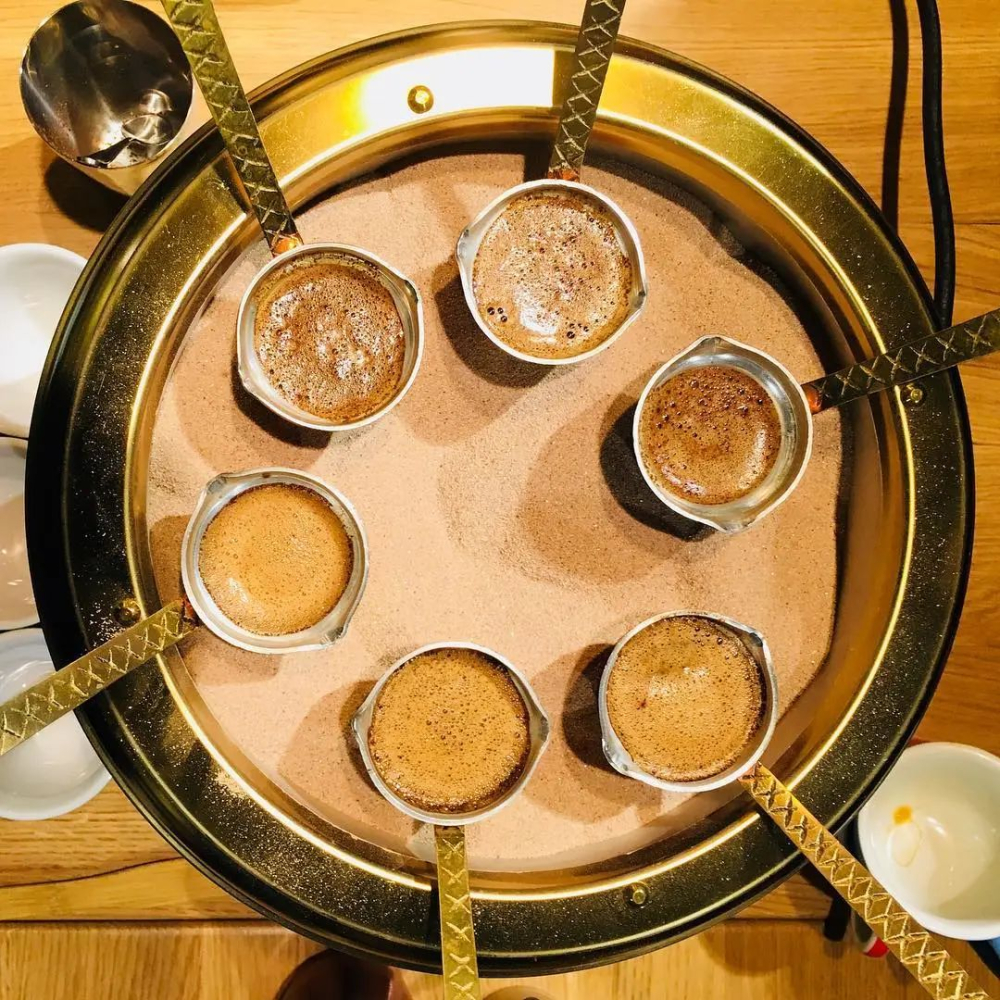
Turkish caffeine has a very exotic cooking style, and after drinking it, it can also be used as a fortune teller, and it has become a success in many moments. But in today's era of pursuit of coffee flavor and taste, the curiosity of Turkish coffee with soup and dregs is still prohibitive to many people.
The source of Turkish coffee in the 16th century, after the Ottoman Empire conquered Yemen, coffee was brought to Constantinople, the capital of the empire, and the Turks began to have the habit of drinking coffee. Today, coffee has developed into an indispensable culture in Turkey, and coffee is involved in important traditional rituals. Every year, WBC also holds the World Turkish Coffee Competition to win a place for the traditional local coffee culture in the circle.
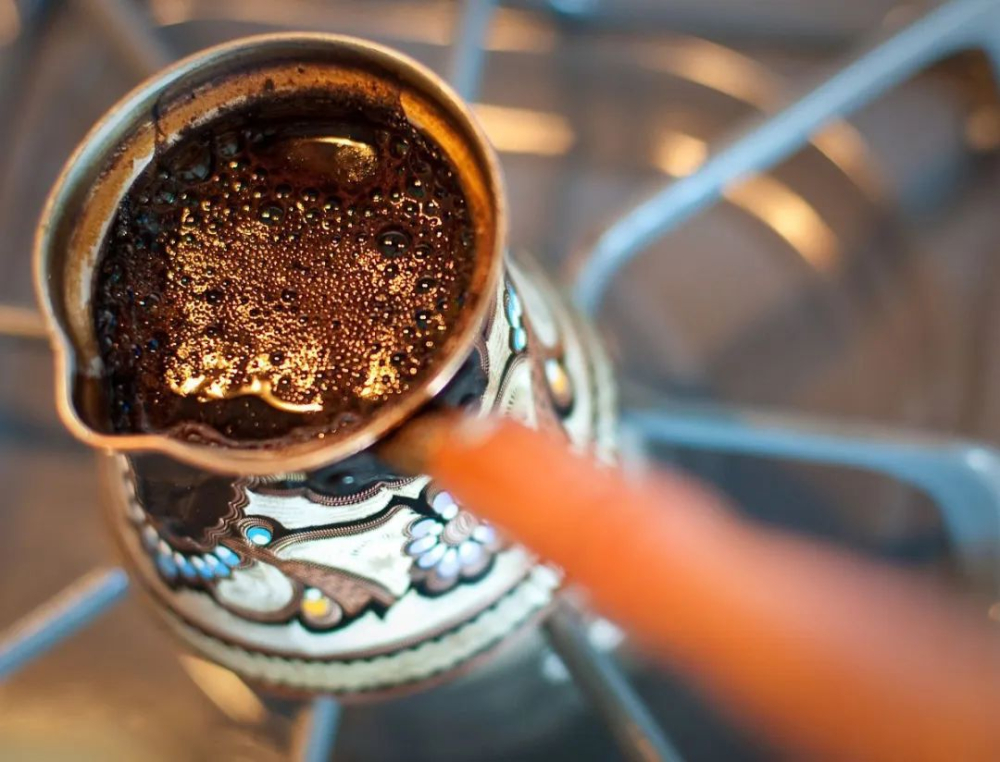
In order to make the coffee taste stronger, the local people use a stone mill to grind the coffee beans as delicate as flour, and then boil the fine powder with water to drink. But unexpectedly found that the taste has improved a lot, and then this way of drinking has gradually spread all over Turkey. In addition, it does not filter the dregs when tasting, which gives birth to a major feature of Turkish coffee, which is divination through the coffee grounds left at the bottom of the cup.
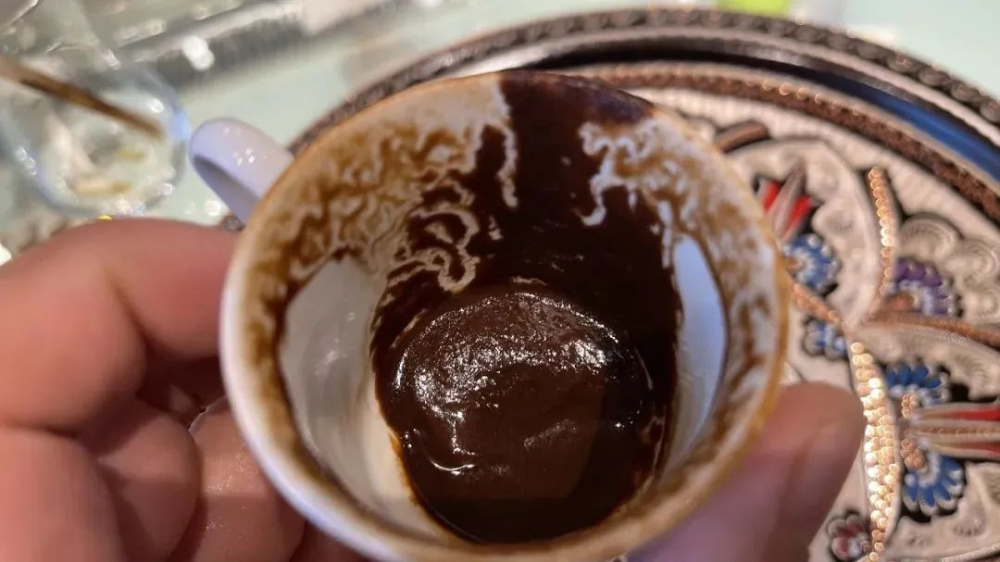
Traditional Turkish coffee is made on the streets of Turkey. The heat source of brewing coffee is not open fire, but a large basin of hot sand. In addition, a mini copper pot called "Cezve" is used, which is usually made of brass and has a heavy feel. The kettle body has a long handle connected to a narrowed cylindrical container. The copper pot is 1-1.5mm thick, ensuring hardness and uniform heat conduction at the same time.
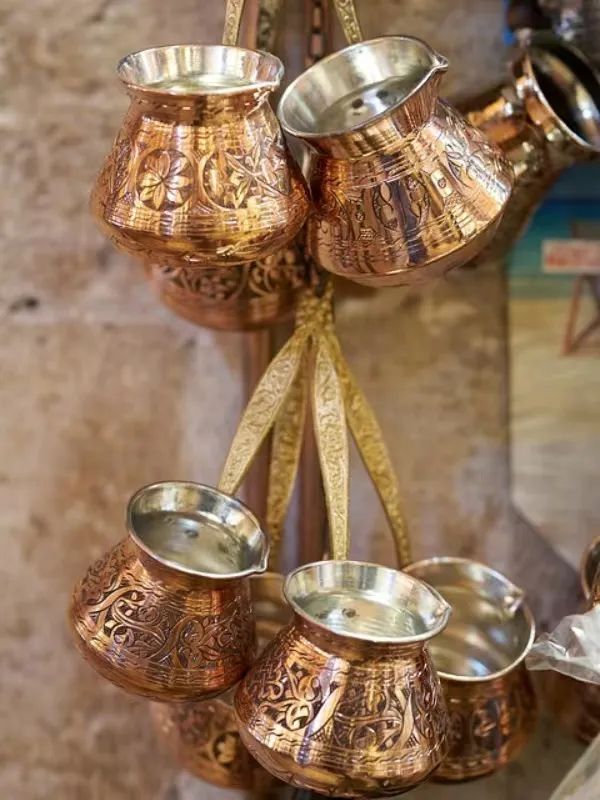
First pour the water and coffee powder into the pot and stir, then wrap the copper pot in the sand table, the fine sand has been fried in advance. When the copper pot is placed in the same place, the thermal conductivity will gradually decrease. The more times the copper pot is moved, the higher the extraction efficiency will be, and the shorter the use time will be. Boil the coffee pulp inside until it boils and pour it into the cup before overflowing. Then keep heating and repeat three times to get a cup of thick black coffee.
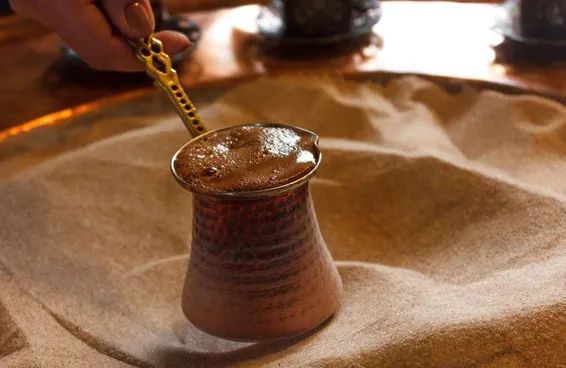
The freshly made Turkish coffee has a layer of caramel-colored foam, when the liquid is very hot, and a large amount of fine powder floats in the coffee liquid, which is not suitable for direct drinking. By letting the coffee grounds precipitate naturally, the coffee grounds can be tasted after a slight drop in temperature, and you can feel the mellow coffee taste and turbid granular feeling. After drinking the very strong coffee, the bottom of the cup will reveal a layer of thick and soft coffee residue.
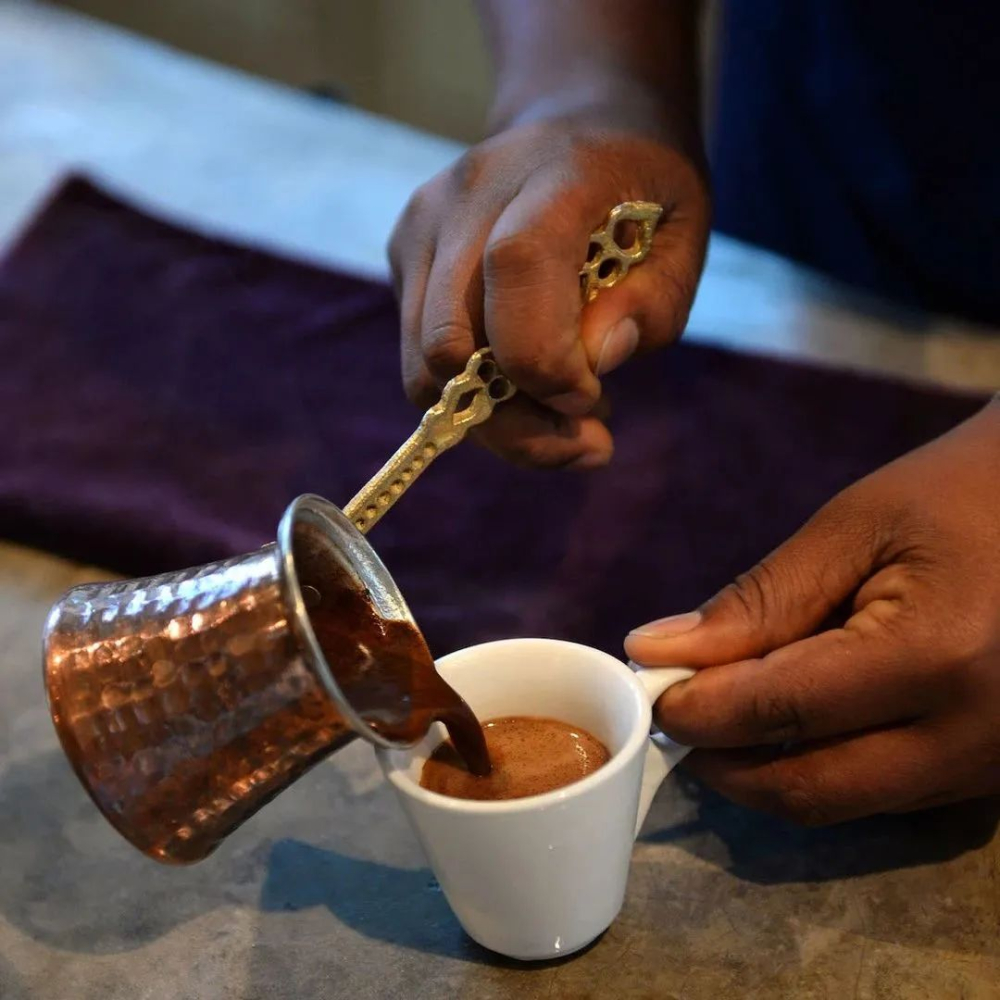
How fine is the grinding of Turkish coffee powder? Among the many brewing methods, Turkish coffee has the finest degree of grinding, also known as very fine grinding. When observed with the naked eye, you may think that very fine grinding is the same as Italian grinding. If you gently rub with your fingers, you can feel that the Italian grinding is still somewhat grainy, like frosting. The Turkish grinding has been completely powdered, each particle is about 100-150 microns, an average of 1 coffee bean can be decomposed into 15000 million 35000 particles.
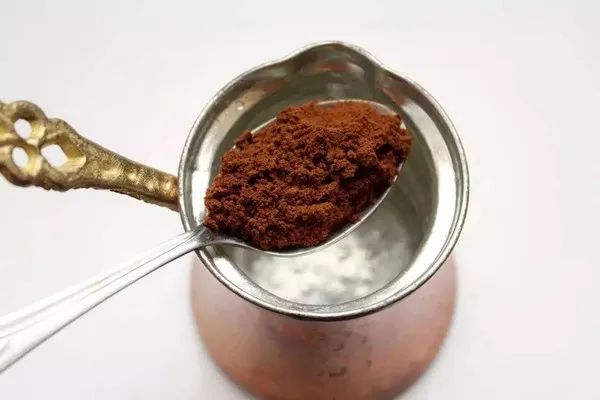
Thanks to such fine grinding, while extracting the flavor of the coffee, it also adds a lot of thick taste to the Turkish coffee. If we filter the coffee grounds and the liquid becomes clear and has no "granular feeling", it will not be Turkish coffee in the traditional sense. The grinding roughness of coffee beans has a great influence on brewing extraction. Very fine grinding makes it easier for us to brew it out. Turkey pursues the bitter and mellow taste of coffee, which is often brewed after boiling for three times. In the Turkish Coffee Competition, which emphasizes the flavor of boutique coffee, baristas make extraction plans according to their own selection of beans. The flavor trend of coffee was affected by adjusting the ratio of powder to water, stirring times, heating time and other factors.

Professional coffee knowledge exchange more coffee bean information please follow the coffee workshop (Wechat official account cafe_style)
For more boutique coffee beans, please add private Qianjie coffee on Wechat. WeChat account: qjcoffeex
Important Notice :
前街咖啡 FrontStreet Coffee has moved to new addredd:
FrontStreet Coffee Address: 315,Donghua East Road,GuangZhou
Tel:020 38364473
- Prev

How to judge the shape of hand-made coffee grounds? what is the problem with the fault in the powder pit after the coffee is washed?
After brewing coffee, many people have the habit of paying attention to powder pits. If the pink wall is complete and evenly thick, you subconsciously feel that you are doing well this time; if there is an "abnormal shape" in the powder pit, you will begin to reflect on which section you did not do well. Qianjie noticed that the powder pit washed by the other side was not only shapeless when communicating with friends.
- Next

How to make shallow roasted coffee beans by hand? Why is it easy to accumulate water when the speed of shallow coffee is slow?
For hand brewers, the first thing to do before making a brewing plan is the roasting degree of coffee beans, and the performance of coffee extraction is different under different roasting degrees. Shallow baked beans retain more flower and fruit aromas because of their light baking, but they often leave only monotonous sour taste when they are cooked at home, and then they begin to fall into doubt. Shallow baking
Related
- Beginners will see the "Coffee pull flower" guide!
- What is the difference between ice blog purified milk and ordinary milk coffee?
- Why is the Philippines the largest producer of crops in Liberia?
- For coffee extraction, should the fine powder be retained?
- How does extracted espresso fill pressed powder? How much strength does it take to press the powder?
- How to make jasmine cold extract coffee? Is the jasmine + latte good?
- Will this little toy really make the coffee taste better? How does Lily Drip affect coffee extraction?
- Will the action of slapping the filter cup also affect coffee extraction?
- What's the difference between powder-to-water ratio and powder-to-liquid ratio?
- What is the Ethiopian local species? What does it have to do with Heirloom native species?

